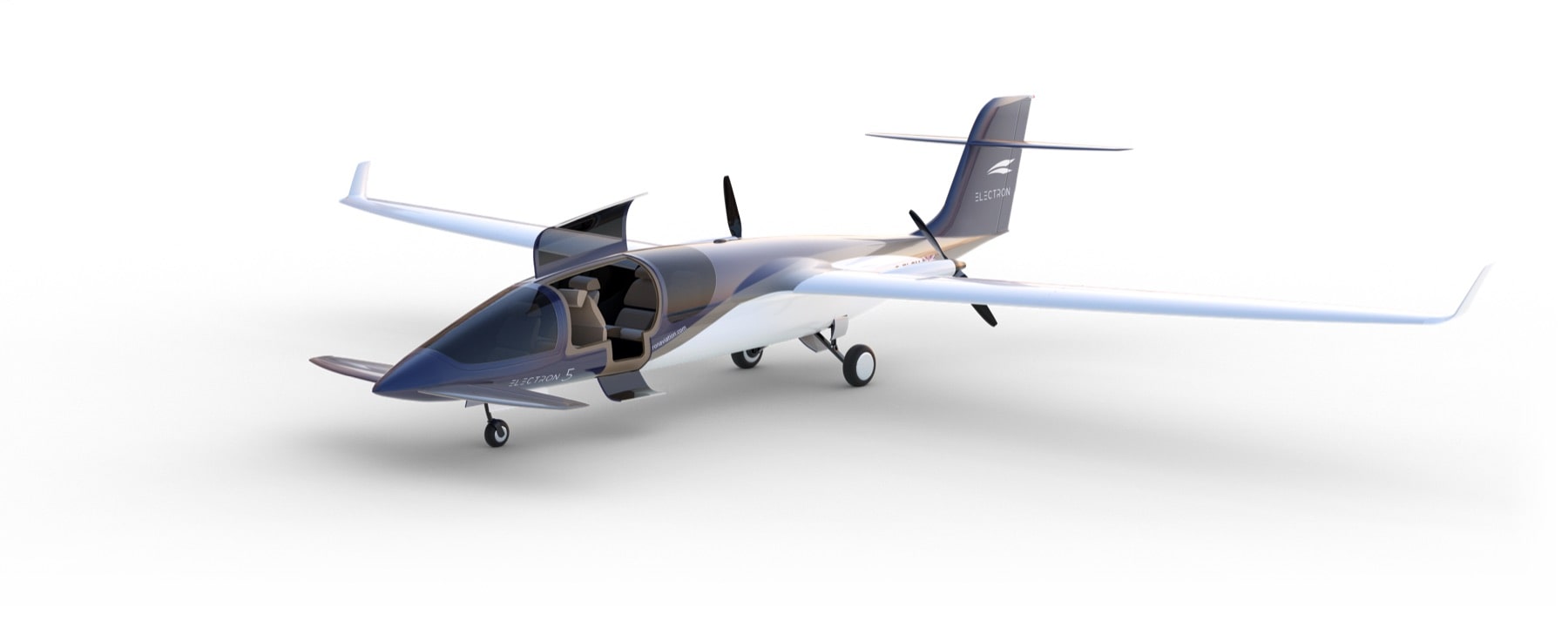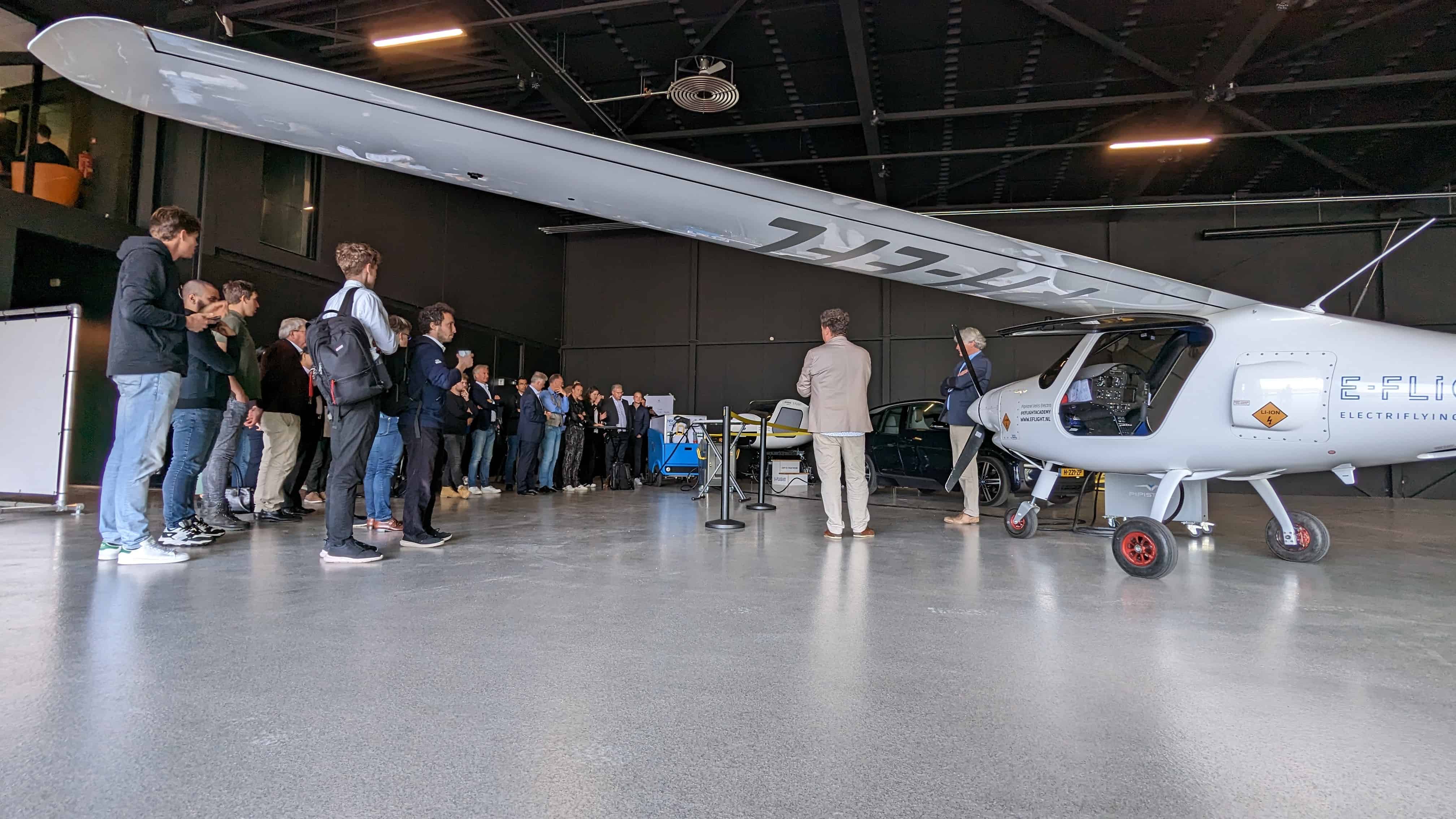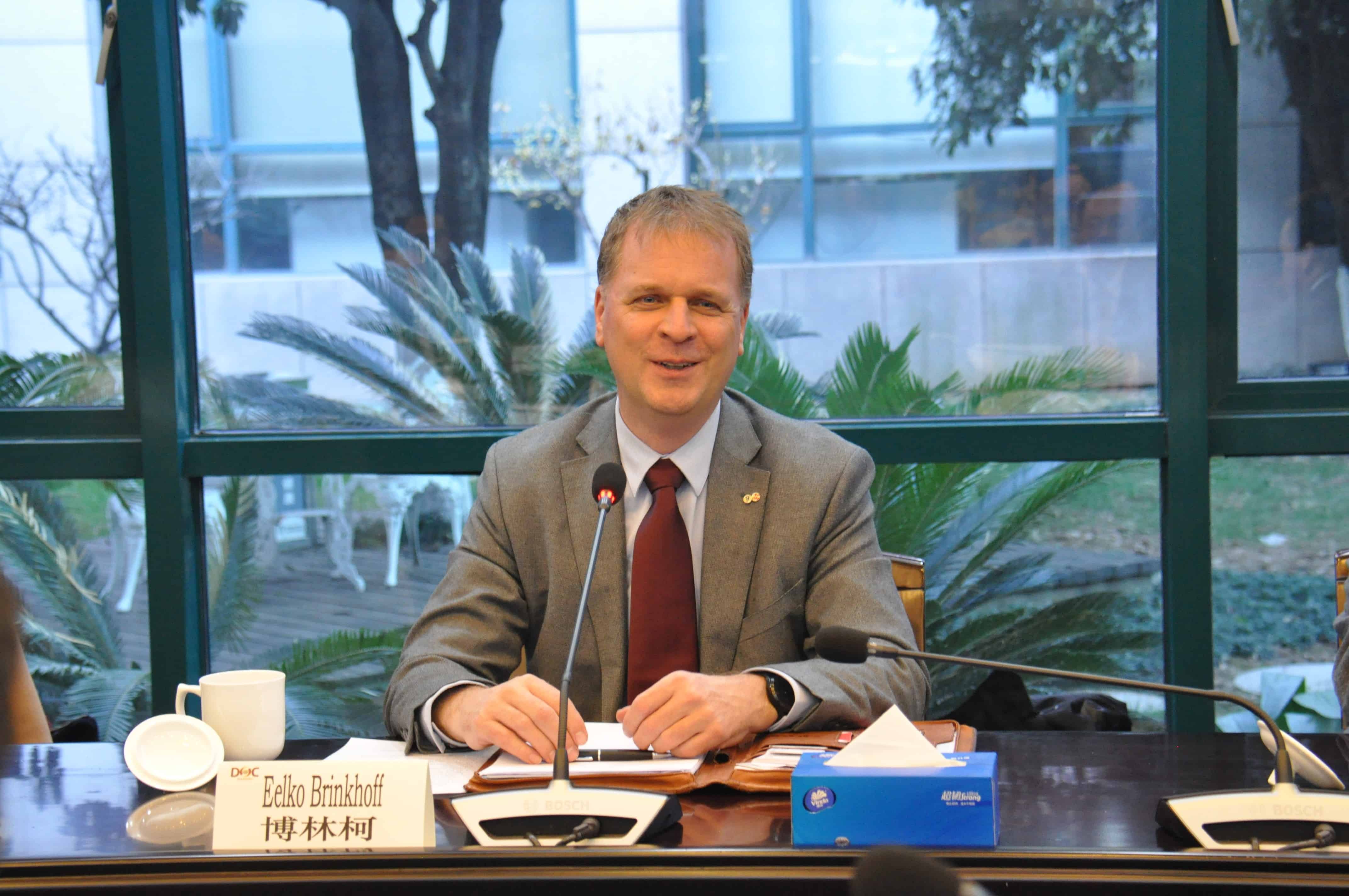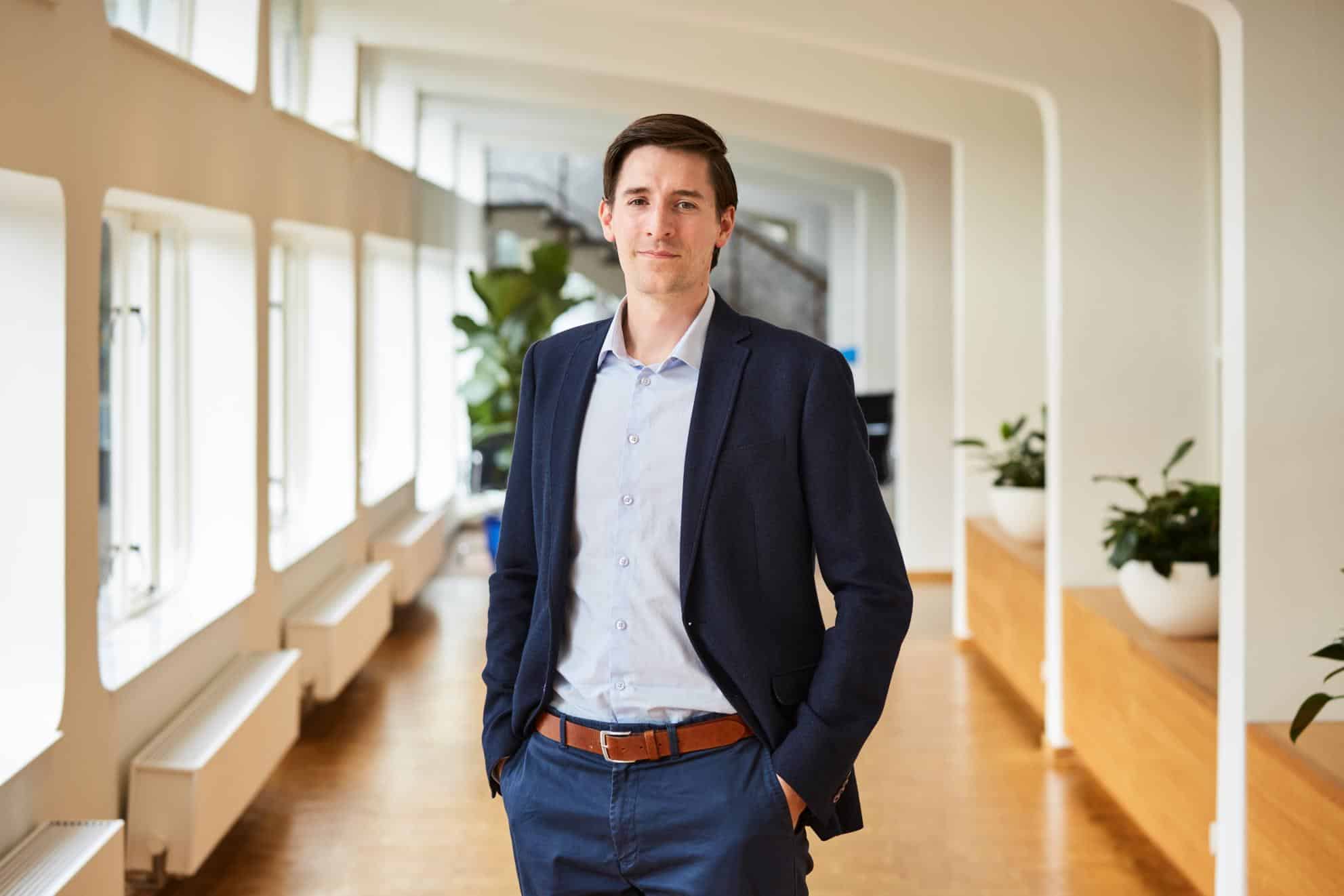
Should the Dutch battery-electric aviation sector ever come of age, there will undoubtedly be regular references to that meeting on Friday, November 12, at the Automotive Campus in Helmond. Initiators Brabant Development Agency (BOM) and Eindhoven Airport wanted to use this session to establish a stronger connection between the worlds of electric aviation and automotive. It was attended by some thirty pioneers who, in one way or another, all want to play a role in the further development of electric aviation in the Netherlands. And no matter how big the differences between them were, there was a remarkable amount of agreement on one thing: the sector can only take the next steps if they join forces.
All those present were very much aware that this would require more than a series of good intentions. At the end of the afternoon, the attendees didn’t need much more than a little “What’s Next?” from Maarten Steinbuch for their deluge of wishes and suggestions. Basically, these came down to two main points: more cooperation (“an association?”) between all those involved in the sector and – not unexpectedly – more investors who are prepared to accept a 20-year horizon.
Ecosystem

Before those conclusions could be reached, there was ample room for a first mutual acquaintance and introductions of various stakeholders. To this end, three main guests (in addition to Maarten Steinbuch, Jan-Willem Heinen of Venturi Aviation, and Josef Mouris of ELECTRON aviation were also asked to share their vision) and a dozen pitchers were invited. It soon became clear that the planned schedule would not be met by a long shot: when the round table discussion and the conclusions should have been reached, the pitches were only halfway.
No one was bothered by this by the way: the attendees were hanging on each other’s every word so as not to miss out on these first careful steps towards the formation of a real ecosystem. Host Automotive Campus Helmond and the Battery Competence Center, recently established there, indicated that they were completely open to the new mobility concepts that could emerge from these initiatives.
Whether this means that society is already convinced of this new reality remains to be seen. Maarten Steinbuch, who recently gained experience in an electric Pipistrel, concentrated his story on debunking a series of preconceptions about electric flying. Too expensive, too dangerous, the batteries too heavy, the range too short – and isn’t hydrogen much more suitable anyway? Steinbuch: “People are still insufficiently capable of imagining how fast developments can go. We know the current situation and can, at best, imagine a small development. But progress is not linear, it is exponential.” In other words: better and cheaper batteries will soon be available, safety will be solved and the shorter range is not a problem at all if you use battery-electric flying for regional purposes.
Steinbuch, therefore, expects that flying will eventually replace train travel – and perhaps even part of car travel. “This is mainly because of the enormous infrastructure costs: building a network of roads or railroads costs billions, for air travel you only need to build something at the departure and arrival locations. Per passenger-kilometer, that means huge price advantage for aviation.” With 2,700 regional airports in Europe, the entire continent is within reach. “And don’t start complaining about the possible noise pollution for everyone in the vicinity of such a landing strip, because these electric planes are much quieter. I have been able to see that for myself.”
Hydrogen?
This battery will not become a replacement any time soon for transatlantic flights with hundreds of passengers, Steinbuch also noted. Because that’s where hydrogen is better? “Forget it. Hydrogen is not going to provide a suitable alternative for any form of mobility ever. In fact, it’s a climate crime to use hydrogen for this. The laws of physics show that that will always remain less efficient – and therefore much more expensive.” For those long flights, e-fuels must begin to provide the solution, Steinbuch says.
Some real, hands-on, experience in electric aviation was shared by Heinen and Mouris, both of whom have already made this their daily business. Heinen has set himself a challenging goal with Venturi Aviation: to build an electric aircraft that can fly about a thousand kilometers with 50 passengers. In doing so, he is the first to admit that this will not happen overnight. “You’ll have to design a completely new aircraft for it in any case,” he says.

And that is exactly what Venturi is working on: the calculators of the models are currently working overtime. Weight, distance, energy density, wingspan, aerodynamics: all variables must be taken into account. But the logistics at the airports also play a role: how fast can recharging take place, who will devise a system for exchanging batteries? There is still a lot to sort out, but Heinen is in no doubt about the feasibility. “Battery-electric flying is on its way, we are paving the road for a generation that wants to travel instead of pollute.” An additional reassurance to that observation, he says, is the fact that all builders of electric aircraft are already completely sold out over the next few years. “That is, just as it was with Tesla at the time, our safety net: we’re banking on reservations.”
Efficient
Josef Mouris is also looking for the best route to commercial success with his ELECTRON Aviation. What helps are the changing circumstances, he says. Batteries are very quickly becoming cheaper and more powerful, the number of planned gigafactories in Europe is immense, and the demand for transport over relatively short distances will only continue to grow. “So the opportunities are enormous.” But so are the challenges. “Well, as long as kerosene is not taxed, it will, unfortunately, remain the most economical fuel for the time being.”
Mouris has already found a solution to this problem: at the first ‘home port’ of ELECTRON aviation, Eelde Airport, his aircraft can be charged directly by solar power. “Then we won’t have to deal with taxes either.” This brings him to a general tip for Europe’s 2,700 regional airports: “Make sure you have the right infrastructure in place, so you are ready to receive all those electric planes.”

As for a realistic distance for electric flights in the near future, the speakers still differ. Whereas Heinen has set his sights at 1,000 kilometers, Steinbuch keeps it at half that distance, and Mouris, with 750 kilometers, is right in between. Who is going to be right will not be up to them alone. The fifteen pitches that followed the three speakers gave an idea of the many variables in this still-young industry. Governments, innovation clusters, knowledge institutions, start-ups, established companies, and individual pioneers are all already working hard to tackle and solve part of the challenge of electric flying. Because whether it’s the impact of the financiers, the power of the battery, the design of the aircraft, the electronics and software that are incorporated, or the logistics at the place of arrival and departure, only if all these factors cooperate will the ambitions ever become reality.
Room for improvement
So there is still work to be done on many fronts. The group also saw some room for improvement for themselves: the all-male composition could do with a bit more diversity for the next meeting. That these people involved from the very first hour will have to give up part of their pioneering feeling, they will certainly take for granted. The common goal is too important to be bothered by that: “Eventually it must become just as normal to take the electric plane for a trip of between 150 and 1500 kilometers as it would be today to take a car or train. But with a clean conscience.”








